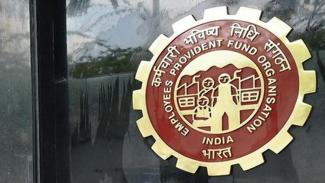The Demand for Increased Pension is Gaining
The Demand for Increased Pension is Gaining
Maitreyi Krishnan
[On 4th November, 2022, a 3 judge bench of the Supreme Court upheld the Employees’ Pension (Amendment) Scheme, 2014, which amended the Employees’ Pension Scheme (EPS), 1995. Given the large- scale effect of the Order, it becomes necessary to unravel the same.]
What was the Employees’ Pension Scheme (EPS), 1995?
The Employees’ Provident Funds and Miscellaneous Provisions Act, 1952 did not originally consist of a pension scheme. The Employees’ Pension Scheme was formulated in 1995 and brought in the component of pension, and constituted a pension fund. It provided for the following pension:
- superannuation pension if she has rendered eligible service of 10 years or more and retires on attaining the age of 58 years;
- early pension, if she has rendered eligible service of 10 years or more and retires or otherwise ceases to be in the employment before attaining the age of 58 years.
Both the employee and the employer contribute 12% of the employee’s basic salary and dearness allowance to the EPF. The employee’s entire part goes to EPF, while the 12% contribution made by the employer is split as 3.67% contribution to EPF and 8.33% contribution to EPS. Apart from this, the Government of India contributes 1.16% per cent to the employee’s pension.
What was the Employees’ Pension (Amendment) Scheme, 2014?
The main aspects of the Employees’ Pension (Amendment) Scheme, 2014 are as follows:
- It raised the pensionable salary cap that was previously Rs. 6,500 to Rs 15,000 a month.
- It allowed members along with their employers to contribute even if the salary went beyond Rs. 15000/- per month and the pensionable salary for the existing member exercising such an option was to be based on the higher salary
- The amendment, required members, with salaries over Rs 15,000 a month, to contribute an additional 1.16% of their salary exceeding Rs 15,000/- a month towards the pension fund.
- The methodology of computing pensionable salary was changed. Under the pre-amendment scheme, the pensionable salary was computed as the average of the salary drawn during the 12 months prior to exit from membership of the Pension Fund. The amendments raised this to an average of 60 months preceding the date of exit.
- It gave all EPS members, as on 1st September 2014, 6 months to opt for the amended scheme. This was extendable by another six months at the discretion of the Regional Provident Fund Commissioner.
- Those who did not exercise the option within the stipulated period or extended period, were deemed to have not opted for contribution over the pensionable salary cap and the extra contributions already made to the pension fund were to be diverted to the Provident Fund account of the member, along with interest.
What did the Supreme Court hold?
The 2014 amendments were challenged by employees belonging to both exempt and un-exempt establishments before various High Courts, which struck down the amendments. The EPFO challenged the decisions before the Supreme Court, which passed its order on 4th November, 2022 holding as follows:
- On employees who had exercised option under 1995 Scheme: The employees who had exercised option under the proviso to paragraph 11(3) of the 1995 scheme and continued to be in service as on 1st September 2014, will be guided by the amended provisions of paragraph 11(4) of the pension scheme.
- Time extended for employees to exercise option: The employees who did not exercise option, under paragraph 11(3) of the pension scheme (pre-amendment) would be entitled to exercise option under paragraph 11(4) of the post amendment scheme. The Court held that since there was uncertainty as regards validity of the post amendment scheme, time to exercise option under paragraph 11(4) of the Scheme was extended by a further period of four months
- On Exempted Establishment: The Court held that employees of exempted establishments shall be entitled to the 2014 Amendment Scheme in the same manner as the employees of the regular establishments.
- On the Payment of 1.16% for Option Members: The Supreme Court struck down the part of the scheme requiring employee's to contribute to the extent of 1.16% for option members. It held that the 1952 Act does not require payment to the pension fund by an employee. However, the Supreme Court suspended the operation of this part of the judgment for a period of 6 months so that the legislature may consider the necessity of bringing appropriate legislative amendment. For the period of six months, the opting employees are required to make payment of 1.16 per cent contribution as a stop-gap measure.
- On the method of computation: The Supreme Court upheld the change of computation of pensionable salary from the average salary during the 12 months prior to exit to the average salary 60 months prior to exit
Leaving some issues partially addressed by the Supreme Court, the fundamental problem of the responsibility of the government to take care of it’s senior citizens is never addressed by anyone. The government has increasingly made the pension scheme more and more contributory and the government is shrugging off its responsibility of taking care of its old-age population. In addition, the long term demands of the working class movement for an increased minimum pension of Rs 10,000 per month and not less than minimum wage, pension linked with price rise and inflation, increasing wage ceiling for eligibility, restoration of Old Pension Scheme for government employees, etc., are yet to be addressed. The working class shall step up its struggles to secure the demands of pension and the right to lead a decent life after the age of retirement.

